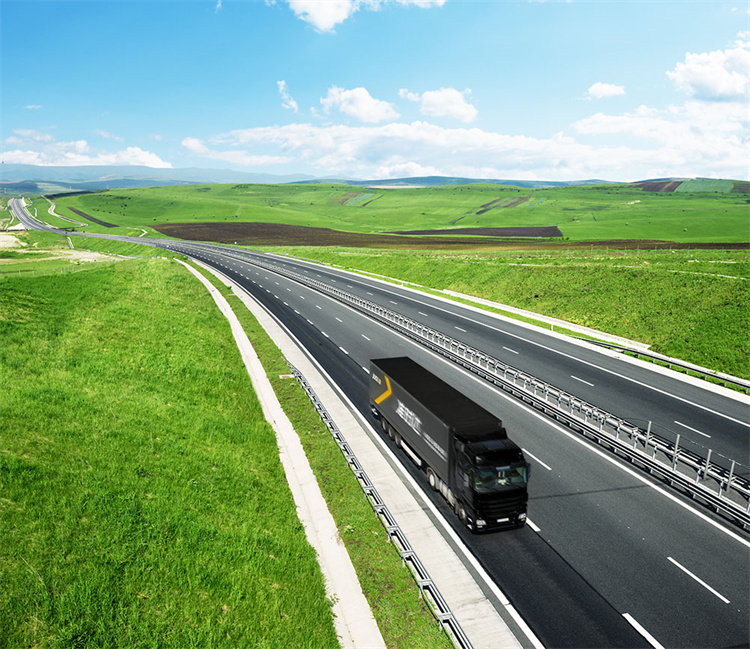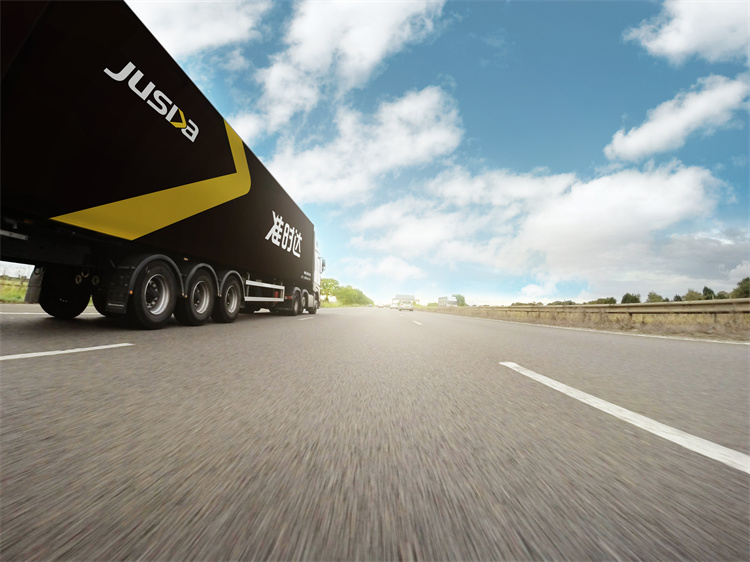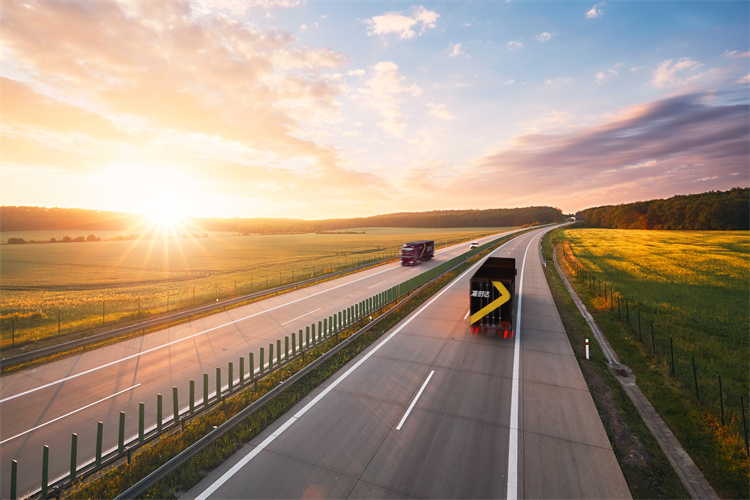Land Transport: Predicting Market Dynamics and Growth in 2025

Land transport plays a crucial role in the global economy. The movement of goods and people relies heavily on this mode of transportation. Predicting Market Dynamics involves analyzing various factors that influence market behavior. Growth predictions help stakeholders make informed decisions. The focus of this analysis centers on the year 2025.
Current Trends in Land Transport

Technological Advancements
Autonomous Vehicles
Autonomous vehicles represent a significant shift in land transport. These vehicles use advanced sensors and artificial intelligence to navigate roads without human intervention. Companies like Tesla and Waymo lead the development of self-driving technology. The adoption of autonomous vehicles could reduce traffic congestion and improve road safety. Many experts believe that autonomous vehicles will become more common by 2025.
Electric Vehicles
Electric vehicles (EVs) are transforming the automotive industry. EVs use electric power instead of traditional fossil fuels. This shift reduces greenhouse gas emissions and dependence on oil. Major automakers like General Motors and Volkswagen invest heavily in EV technology. The global sales of electric vehicles are projected to grow significantly. The rise of EVs aligns with global sustainability goals and regulatory pressures to reduce emissions.
Regulatory Changes
Emission Standards
Governments worldwide implement stricter emission standards. These regulations aim to reduce air pollution and combat climate change. The European Union, for instance, has set ambitious targets for reducing carbon dioxide emissions from vehicles. Automakers must comply with these standards or face hefty fines. Stricter emission standards drive innovation in cleaner technologies.
Safety Regulations
Safety regulations in land transport continue to evolve. Authorities introduce new rules to enhance vehicle safety and protect passengers. Features like automatic emergency braking and lane-keeping assist become mandatory in many regions. These regulations push manufacturers to integrate advanced safety technologies into their vehicles. Improved safety standards contribute to reducing road accidents and fatalities.
Consumer Behavior
Shift Towards Sustainable Transport
Consumers increasingly prefer sustainable transport options. This shift reflects growing environmental awareness and concerns about climate change. Public transportation, cycling, and walking gain popularity as eco-friendly alternatives. The demand for electric and hybrid vehicles also rises. Businesses respond by offering more green transportation solutions.
Urbanization and Its Impact
Urbanization significantly impacts land transport. More people move to cities, leading to increased demand for efficient urban mobility solutions. Public transit systems expand to accommodate growing populations. Urban planners focus on creating pedestrian-friendly and bike-friendly infrastructure. The rise of ride-sharing services like Uber and Lyft also changes urban transportation dynamics. Urbanization drives the need for innovative and sustainable transport solutions.
Predicting Market Dynamics for 2025

Projected Growth Rates
Regional Analysis
The global road haulage market is expected to grow at a compound annual growth rate (CAGR) of over 6% during the forecast period. In contrast, the United States road freight transport market is projected to grow at a CAGR of 3.75% from 2024 to 2030. Europe will see significant growth, with Spain projected to exhibit the highest CAGR of 8.10% during 2020-2025. These differences highlight the varying regional dynamics in the land transport sector.
Sector-wise Analysis (Freight vs Passenger)
Freight transport will experience notable growth, especially in the oil and gas, mining, and quarrying segments in the United States. Approximately 70% of all projects in these sectors are expected to commence operations by 2025. Passenger transport will also see growth, driven by urbanization and the increasing demand for efficient public transit systems. The healthcare segment in Europe will be particularly lucrative, contributing significantly to the overall growth in the region.
Emerging Markets
Asia-Pacific Region
The Asia-Pacific region will emerge as a key player in the land transport market. Rapid urbanization and economic development will drive demand for both freight and passenger transport. Countries like China and India will invest heavily in infrastructure development to support this growth. The adoption of electric and autonomous vehicles will also accelerate in this region, aligning with global sustainability goals.
Latin America
Latin America will also see substantial growth in the land transport sector. Brazil and Mexico will lead this growth, driven by investments in infrastructure and technological advancements. The region will focus on improving public transit systems and expanding road networks. The rise of e-commerce will further boost demand for efficient freight transport solutions.
Investment Trends
Public vs Private Investments
Public investments will play a crucial role in developing land transport infrastructure. Governments will allocate funds for building and upgrading roads, bridges, and public transit systems. Private investments will complement these efforts, focusing on innovative technologies like autonomous and electric vehicles. Collaboration between public and private sectors will be essential for achieving sustainable growth.
Infrastructure Development
Infrastructure development will be a key driver of market dynamics in 2025. Projects aimed at expanding and modernizing road networks will receive significant funding. Smart transportation systems will become more prevalent, integrating technologies like the Internet of Things (IoT) to enhance efficiency and safety. These developments will create new opportunities for stakeholders in the land transport sector.
Key Factors Influencing Market Dynamics
Economic Factors
Global Economic Conditions
Global economic conditions significantly impact land transport. Economic growth drives demand for goods and services. This, in turn, increases the need for transportation. Conversely, economic downturns can reduce transport demand. For instance, the 2008 financial crisis led to a decline in freight volumes. Predicting market dynamics requires understanding these economic cycles.
Fuel Prices
Fuel prices play a crucial role in the land transport sector. High fuel costs can increase operational expenses for transport companies. This can lead to higher prices for consumers. Conversely, low fuel prices can reduce costs and boost demand. The volatility of fuel prices makes it essential to monitor trends closely. Advances in alternative fuels and electric vehicles may mitigate some of these impacts.
Technological Innovations
Smart Transportation Systems
Smart transportation systems enhance efficiency and safety. These systems use advanced technologies like sensors and data analytics. For example, traffic management systems can optimize traffic flow. This reduces congestion and improves travel times. Autonomous vehicles also benefit from smart transportation systems. These innovations contribute to the overall improvement of land transport.
Internet of Things (IoT) in Transport
The Internet of Things (IoT) revolutionizes land transport. IoT devices collect and share data in real-time. This data helps optimize routes and monitor vehicle health. For instance, fleet managers can track vehicle locations and conditions. This leads to better maintenance and reduced downtime. IoT integration enhances the efficiency and reliability of transport services.
Environmental Concerns
Climate Change Policies
Climate change policies influence the land transport sector. Governments implement regulations to reduce carbon emissions. For example, the European Union has set strict emission targets. These policies drive the adoption of cleaner technologies. Electric vehicles and alternative fuels gain popularity as a result. Compliance with climate policies becomes a key factor in predicting market dynamics.
Green Technologies
Green technologies play a vital role in sustainable transport. These technologies aim to reduce environmental impact. For instance, electric vehicles produce zero tailpipe emissions. Renewable energy sources power these vehicles. Additionally, advancements in battery technology extend vehicle ranges. Green technologies align with global sustainability goals. Their adoption will shape the future of land transport.
The analysis highlighted key trends such as technological advancements, regulatory changes, and shifts in consumer behavior. Staying informed about market dynamics proves essential for stakeholders. The transportation industry faces an inflection point with nearshoring efforts and changing trade dynamics. Data fluency and transparency will shape future success. The year 2025 promises significant growth and transformation in land transport. Understanding these factors will help navigate the evolving landscape.
See Also
5 Key Trends Shaping Future Supply Chain Efficiency
Optimizing Automotive Demand Forecasting: Data-Driven Decisions
Career Growth Path in the Future of Supply Chain
Digital Technology in Future Logistics: Pathway Clearing
Exploring Latest Transport Technology for Supply Chains: Ready?
